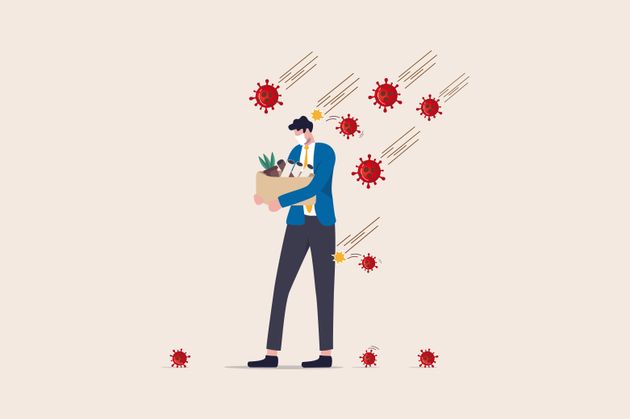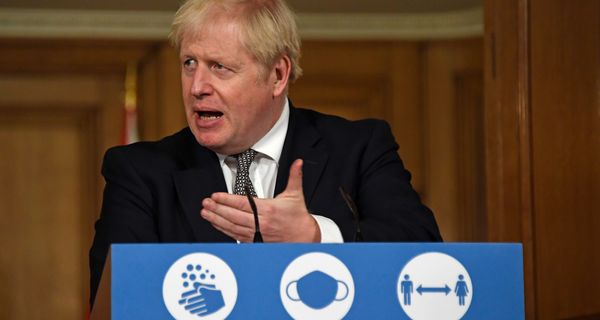Hours before the UK furlough scheme was due to end at the end of October, the government announced it will now be extended until December – as part of new month-long lockdown restrictions in England, that will see the closure of pubs, restaurants, gyms, and non-essential shops.
The additional financial support is on a par with the original scheme that first began in March, which paid 80% of the wages up to a maximum of £2,500 a month, winding down to 60% as the economy began to reopen this summer
Boris Johnson said in his latest announcement: “I’m under no illusions about how difficult this will be for businesses which have already had to endure such hardship this year and I’m truly, truly sorry for that – and that’s why we’re going to extend the furlough system through November.”
Many people are worried that because of the eleventh-hour nature of the lockdown and furlough announcement, it’s too late for businesses to retract redundancies made in anticipation of the original furlough coming to an end.
Here’s what you need to know if you are in this situation.
What is happening to the furlough scheme?
The extended furlough scheme will turn the clocks back to how things were during the first lockdown.
Employees will receive 80% of their current salary for hours not worked, up to a maximum of £2,500 and employers will have to pay employer National Insurance contributions and pension contributions.
Flexi-furlough will continue to be an option, so employees can work part-time and receive a furlough grant for unworked hours.
“The main difference to be aware of is that employers can claim for any employees who were on payroll by October 30,” says Matthew Bradbury from Citizens Advice. “Businesses will have the flexibility to bring furloughed employees back to work on a part-time basis or furlough them full-time.”
So far, about 10 million jobs have been claimed for and an estimated two million workers were still on furlough at the end of October. Around half of these are in the hospitality, arts and recreation, administrative, and aviation industries.
Who can go back on furlough?
To be eligible under this extension to the scheme, employees must have been on an employer’s payroll before midnight on October 30.
“It is currently unclear if employers can re-hire employees to put them onto the extended furlough scheme,” says Lucy Lewis, partner at commercial law firm Lewis Silkin. “This is of critical importance since many furloughed employees were made redundant at the end of October on the assumption that the furlough scheme was ending on that date.”
Given the original furlough scheme allowed employers to re-hire employees who were made redundant before it was launched, it’s possible the extension will work the same as it did before, adds Lewis – however, there are no guarantees.
“Even if re-hiring is allowed, employers will not be under any obligation to re-hire and should take legal advice before doing so,” she explains. “There’s a big barrier financial, administrative barrier and people will fall through the gaps in terms of employment changes and I think is inevitable.”
The extension of furlough will be UK-wide, covering Scotland, Northern Ireland, and Wales, despite devolved nations called for the measure to support their own tightened restrictions weeks ago.
What if I’ve already lost my job?
If you’ve already been made redundant, it is unlikely you will be able to access the furlough scheme.
“There may be some exceptions as the guidance currently states you can be furloughed if you were on your company’s payroll by October 30 and HMRC have not been notified of your redundancy,” says Matthew Bradbury.
“If you’re struggling financially, contact your local Citizens Advice who can provide you with advice and support, including on what help might be available if you’ve lost income.”

What if I’m self-employed?
Since the lockdown announcement, chancellor Rishi Sunak has announced a new round of Self-Employed Income Support Scheme. The government will be increasing support to the self-employed workers from 40% of trading profits to 80% at the end of November for the duration of the new England lockdown.
Self-employed grants will be calculated over three months so this increases the total grant from 40% to 55% of trading profits for November to January, while the maximum grant increases to £5,160.
Grants will also be paid faster than previously planned with the claims window opening at the end of November rather than the middle of December.
What happens when this lockdown ends?
When England comes out of lockdown, the government suggests regions will be re-classed into tiers as before, based on their coronavirus risk level. This will be dependent on a vote from government on whether lockdown is extended again.
When the new furlough extension ends in December, the Job Support Scheme, that was due to start at the beginning of November will kick in.
Under this scheme, if businesses are forced to close due to local restrictions in tier 3 areas, workers will be paid 67% of their wages, up to a maximum of £2,083.33. Employers won’t have to pay towards an employee’s salary.
“What I think we will see over this month is a lot of pressure on the government to catch a significant group of people who are going to fall through the holes between the two schemes,” Lewis predicts.
“There is a really big gap and it’s inevitable that there will be redundancies.”




